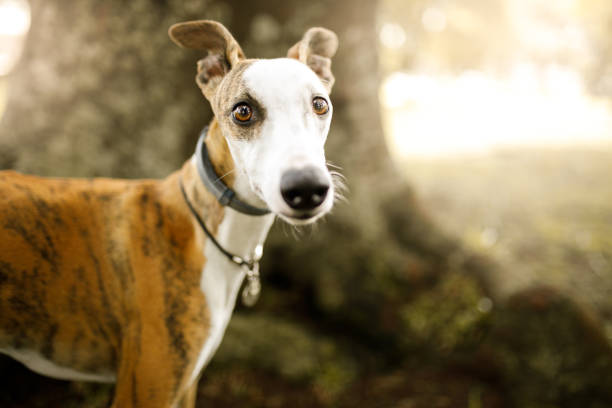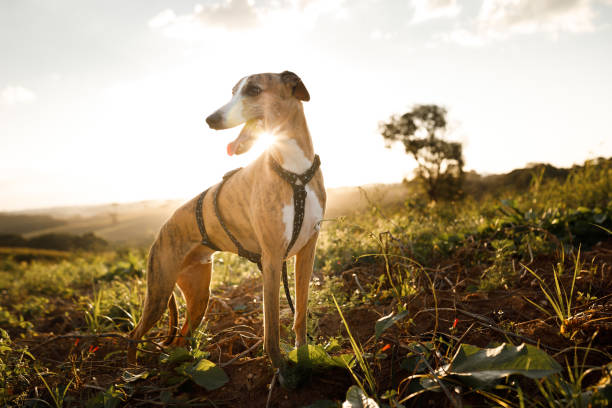Whippet

Breed History:
The Whippet originated in England during the 18th and 19th centuries. Bred by coal miners and working-class families in Northern England, the Whippet was developed from small Greyhounds and terrier-like dogs to create a fast, agile, and compact hunter.
Known as the "poor man's racehorse," Whippets were used for racing, rabbit hunting, and lure coursing. The breed gained popularity for its speed, gentle temperament, and suitability as a house dog. It was recognised by the Kennel Club (UK) in 1891 and by the AKC in 1888.
|
Gender |
Height |
Weight |
|
Male |
47-51 cm |
11-15 kg |
|
Female |
44-47 cm |
9-13 kg |
Size – Medium
Life Expectancy: 12–15 years

Breed Appearance:
The Whippet is a slim, elegant, and athletic breed with a greyhound-like silhouette. It has a long, arched neck, deep chest, slender waist, and a long, tapering tail.
The short, smooth coat comes in a wide variety of colours and patterns, including brindle, black, white, fawn, blue, red, or any combination. Its expression is alert and gentle, with large, expressive eyes and rose-shaped ears.
Breed Type – Companion/Sight Hound:
Originally bred for coursing and racing, the Whippet is a natural athlete with a quiet, affectionate, and easy-going temperament. Despite its racing background, it is remarkably calm and laid-back indoors, often dubbed a “couch potato.”
Whippets are friendly with people and other dogs and generally do well with respectful children. They can be reserved with strangers but are rarely aggressive.

Training:
The Whippet is intelligent, sensitive, and eager to please. It responds best to gentle, positive reinforcement techniques and does not do well with harsh corrections.
Socialisation should begin early to build confidence, and recall training is essential due to the breed’s strong prey drive.
Health & Care:
Whippets are typically healthy, but owners should be aware of the following concerns:
-
Anaesthesia sensitivity (due to low body fat)
-
Eye issues (e.g., PRA, cataracts)
-
Deafness (rare)
-
Cold intolerance
They have thin skin and minimal fat, making them prone to scrapes and chills. A well-fitted coat in cold weather and a soft bed are recommended.

Living Conditions:
The Whippet is well-suited to apartment or house living, as long as it gets daily exercise. It thrives in a calm, warm, and loving environment, and prefers being close to its family.
Whippets are indoor dogs and dislike being left outside or alone for long periods. They are generally quiet and well-mannered indoors.
Exercise:
Though calm indoors, Whippets need moderate daily exercise—about 45–60 minutes, including brisk walks and free-running in a safe, enclosed area.
They excel in lure coursing, agility, and even therapy work. Puppies should be exercised carefully to avoid injury.
Grooming:
-
Extremely low grooming needs
-
Weekly brushing with a soft glove or mitt
-
Occasional bathing as needed
-
Regular nail trimming, ear cleaning, and dental care
They are minimal shedders and have no doggy odour.

Advantages:
-
Gentle, affectionate, and quiet
-
Very clean and low-shedding
-
Well-suited to indoor living
-
Athletic and agile outdoors
-
Gets along with kids and other dogs
-
Elegant appearance and friendly nature
Disadvantages:
-
High prey drive—may chase small animals
-
Sensitive to cold and hard surfaces
-
Can be timid if poorly socialised
-
Needs secure areas to run safely
-
Prone to injury due to thin skin
-
May suffer from separation anxiety if left alone too long

